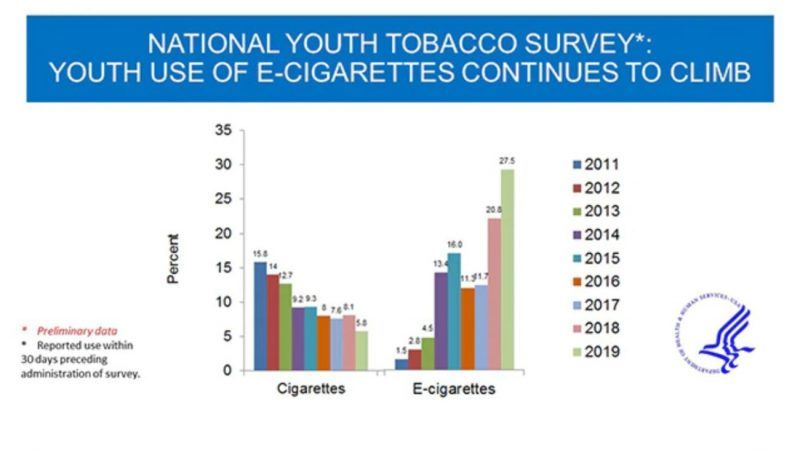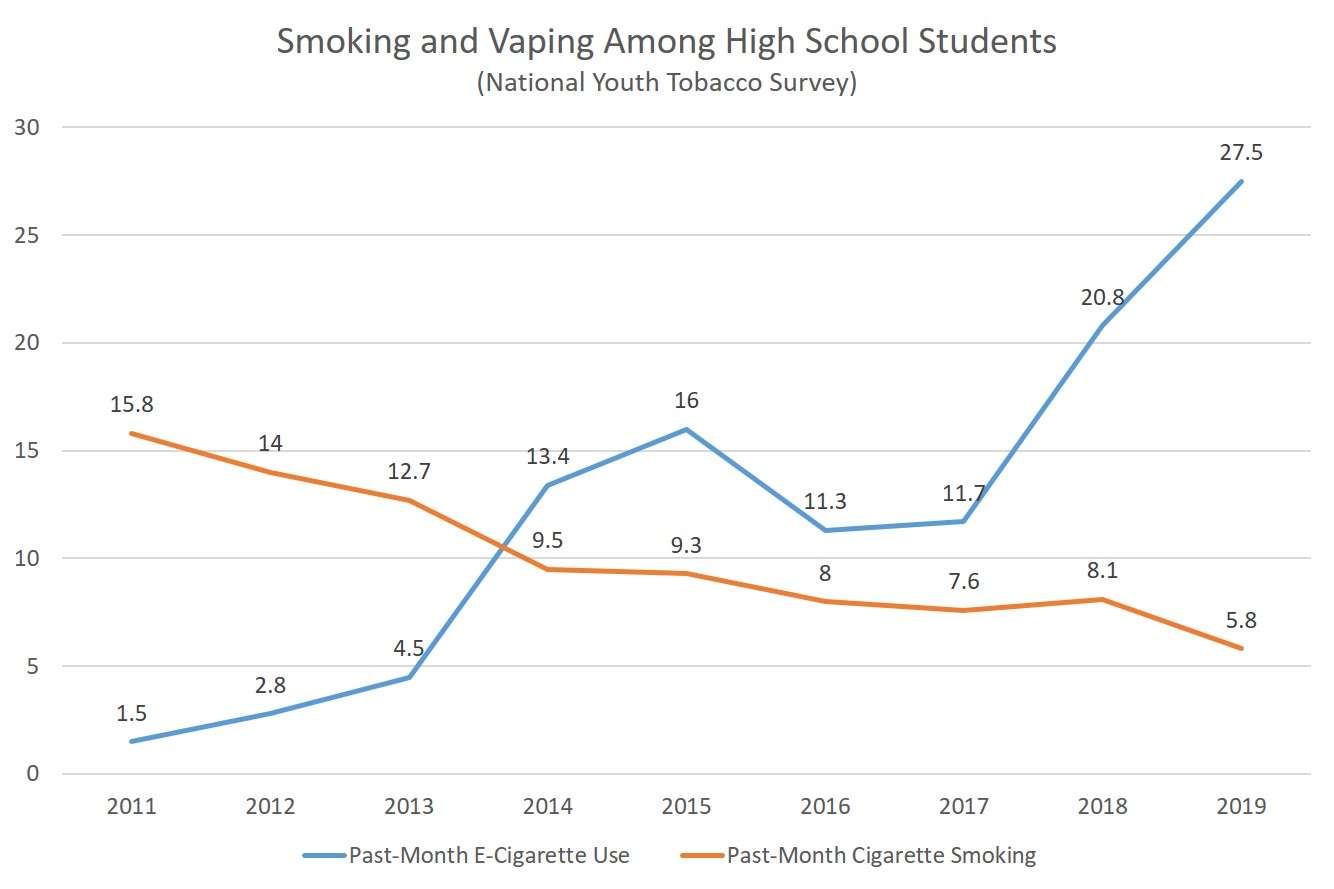The Ban on Flavored E-Cigarettes May Lead to More Smoking by Teenagers As Well As Adults
As the popularity of e-cigarettes has exploded, smoking rates among high school students have reached record lows.

The Department of Health and Human Services says the Trump administration's pending ban on flavored e-cigarettes is necessary because of recent increases in underage vaping. The department cites "preliminary numbers from the National Youth Tobacco Survey" (NYTS) that "show a continued rise in the disturbing rates of youth e-cigarette use." Yet those data also show that smoking by teenagers continues to fall, which undermines the claim that e-cigarettes are a gateway to the real thing and suggests that vaping is actually a substitute for smoking.

According to the NYTS, the prevalence of past-month cigarette smoking among high school students fell from 8.1 percent in 2018 to 5.8 percent this year, even as the prevalence of past-month vaping rose from 20.8 percent to 27.5 percent. Since 2011, the smoking rate has fallen by 63 percent, while the vaping rate has increased more than 18-fold. Based on these data, Boston University public health professor Michael Siegel found a negative correlation of –0.89 between vaping and smoking among high school students.
Those opposing trends suggest not only that more vaping does not result in more smoking but that teenagers who otherwise would be smoking are instead vaping, a much less dangerous habit. In fact, a 2018 study, based on data from the NYTS and other surveys, found that the decline in smoking among teenagers and young adults accelerated as vaping became increasingly common.
The National Survey on Drug Use and Health shows a similar pattern. "Fewer than 1 in 6 people aged 12 or older in 2018 were past month cigarette smokers," the Substance Abuse and Mental Health Services Administration, which oversees that survey, noted last month. "Cigarette use generally declined between 2002 and 2018 across all age groups. Some of this decline may reflect the use of electronic vaporizing devices ('vaping'), such as e-cigarettes, as a substitute for delivering nicotine." (Emphasis added.)
The Monitoring the Future Study likewise shows that smoking rates among teenagers have hit record lows in recent years. The prevalence of past-month cigarette smoking among high school seniors, for example, fell from 18.7 percent in 2011 to 7.6 percent in 2018, a 59 percent drop. While the rising popularity of vaping does not account for the entire decrease, it certainly seems to have helped.
By banning the kinds of e-cigarettes and e-liquids overwhelmingly preferred by adults who used to smoke, the Food and Drug Administration (FDA) will drive many of them back to a far more hazardous source of nicotine. The same sort of harm-maximizing substitution is apt to occur among teenagers, who may respond to the ban by switching from vaping to smoking. If so, the fear that vaping is a gateway to smoking will become a self-fulfilling prophecy.
Former FDA Administrator Scott Gottlieb, whose concerns about vaping by teenagers started this ball rolling, acknowledged that some teenagers who vape might otherwise be smoking. "It's probable," he told me last year. "It's implausible for me to say that there aren't kids out there who are using e-cigarettes instead of combustible tobacco and probably, if they never had this opportunity, would have used combustible tobacco." But that reality, Gottlieb said, does not figure in the FDA's decisions. Maybe it should.


Show Comments (21)